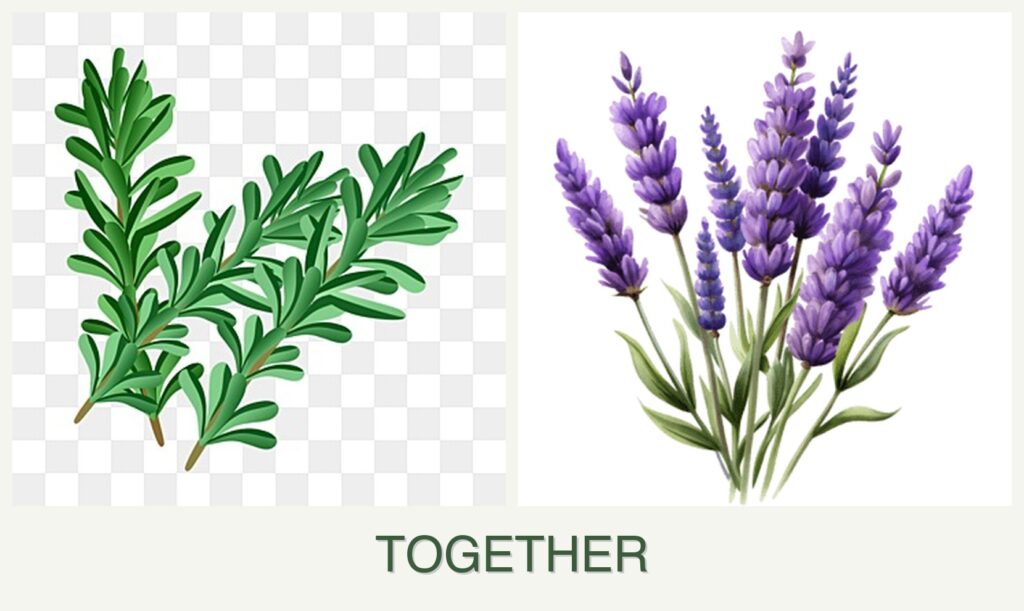
Can you plant rosemary and lavender together?
Can You Plant Rosemary and Lavender Together?
Companion planting is a gardening strategy that involves growing different plants together to enhance growth, deter pests, or improve flavor. Rosemary and lavender, two aromatic herbs, are often considered for this practice due to their similar growth requirements. In this article, you’ll learn about their compatibility, benefits, potential challenges, and best practices for planting them together.
Compatibility Analysis
Yes, you can plant rosemary and lavender together. These herbs share similar growth requirements, making them excellent companions in the garden. Both prefer full sun, well-drained soil, and are drought-tolerant, which simplifies their care. Their aromatic properties can deter pests, and they do not compete heavily for nutrients due to their modest needs. However, proper spacing is essential to ensure each plant has enough room to thrive.
Growing Requirements Comparison Table
| Factor | Rosemary | Lavender |
|---|---|---|
| Sunlight Needs | Full sun | Full sun |
| Water Requirements | Low (drought-tolerant) | Low (drought-tolerant) |
| Soil pH and Type | 6.0-7.5, well-drained | 6.5-7.5, well-drained |
| Hardiness Zones | 6-9 | 5-9 |
| Spacing Requirements | 2-3 feet apart | 2-3 feet apart |
| Growth Habit | 2-4 feet tall, 2-3 feet spread | 1-3 feet tall, 2-4 feet spread |
Benefits of Planting Together
Planting rosemary and lavender together offers several advantages. Their strong scents can repel pests such as aphids and moths, reducing the need for chemical pesticides. Both herbs attract pollinators like bees, which can benefit surrounding plants. Additionally, their similar water and sunlight needs make them space-efficient companions, allowing gardeners to maximize their garden layout. Their presence in the garden can also enhance the flavor of nearby herbs due to the shared aromatic environment.
Potential Challenges
While rosemary and lavender are compatible, some challenges might arise. Both plants require well-drained soil, so heavy or clay soils need amending to prevent root rot. They have similar water needs, but overwatering can be detrimental, especially in humid climates. Although they are generally disease-resistant, crowded conditions can increase the risk of fungal issues. Ensuring proper spacing and airflow is crucial to overcoming these challenges.
Planting Tips & Best Practices
- Optimal Spacing: Plant rosemary and lavender 2-3 feet apart to allow adequate airflow and light penetration.
- Timing: Plant in the spring after the last frost or in early fall in milder climates.
- Container vs. Garden Bed: Both herbs can thrive in containers with good drainage or garden beds with amended soil.
- Soil Preparation: Mix sand or gravel into the soil to improve drainage if necessary.
- Companion Plants: Consider pairing with sage, thyme, or oregano, which share similar growing conditions.
FAQ Section
Can you plant rosemary and lavender in the same pot?
Yes, as long as the pot is large enough (at least 12 inches deep) and has excellent drainage.
How far apart should rosemary and lavender be planted?
Space them 2-3 feet apart to ensure adequate airflow and growth space.
Do rosemary and lavender need the same amount of water?
Yes, both are drought-tolerant and prefer infrequent watering once established.
What should not be planted with rosemary and lavender?
Avoid planting with moisture-loving plants like mint or basil, which have different water requirements.
Will rosemary affect the taste of lavender?
No, planting them together will not alter each other’s flavor.
When is the best time to plant rosemary and lavender together?
The best time is in spring after the last frost or early fall in areas with mild winters.
By understanding their compatibility and following these best practices, you can successfully grow rosemary and lavender together, creating a fragrant and functional garden space.



Leave a Reply